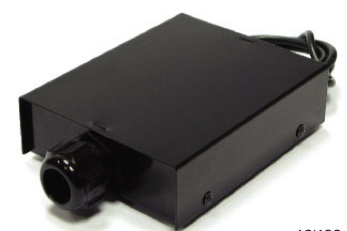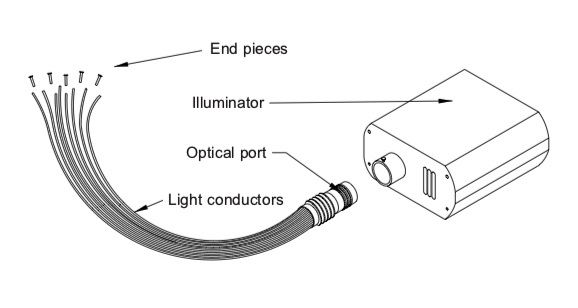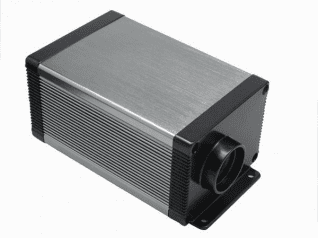VIDEOS
Starry Sky Compilation:
Techniques using fiber optic:
Illuminators
We offer a wide range of illuminators:
FAQ’s
What is a fiber optic?
Fiber optics are long lenses. A cylinder or rod of transparent material forming a core surrounded by an external cladding with a slightly different material. Light, when entering the fiber, rebounds on the outer cladding towards the core. This way the light advances through the fiber in bounds or steps, until it exits at the other end.
Are there different qualities of fiber optics?
Definitely yes. The raw materials used in the manufacture of fibers may be similar in some instances but the process to make finished optics can vary greatly from one manufacturer to another. The greatest differences arise from the level of purity and refinement with which the raw materials are pro- duced, the degree of impurities, contamination and the very technology of the process. Optical properties such as numerical aperture, attenuation and selective spectral absorption are widely diffe- rent from one fiber to other. This means that some fibers may be suitable for one task and useless for others.
What is a light guide?
When a number of single fibers are grouped together to make a larger diameter light conductor the resulting structure is called a light guide. Sometimes large diameter solid core fibers are also termed light guide.
Are fibers safe?
Fiber optics are passive elements, therefore do not use power to generate light, as is the case with lamps. As light conductors only carry light from one point to another, never electricity.
Fiber optics can be put under, or in direct contact with water, can be cut, handled, broken or hammered and can never be anything but totally safe lighting conductors, with the exception of power conversion.
What makes a good illuminator?
Illuminators must perform three separate tasks with a degree of efficiency. Firstly must house a lamp and its power source, transformer, ballast, igniter and wiring in a correct and safe manner.
Secondly, it must focus the light of the lamp in the most efficient way to ensure an adequate performance. Thirdly, it must create a suitable environment to guarantee the long life of the common end, this being the union with the fiber optics. With this last task in mind, an illuminator must be designed to minimize the ther- mal load on the screen by all possible means, filters, forced ventilation, air ducting and deflectors.
Are fiber optics systems difficult to install?
Fiber optics systems, as a whole, are easier to install than electrical fittings.
Sometimes displays, panels, ceilings, effects or projects are made involving thousands or even hundreds of thousands of single optical fiber ends which, to be fair, are a challenge to install.
The problem in these cases is of sheer numbers, size and complexity. In any case to install a point of fiber optics is considerably easier than to install an electrical point.
What is a starry sky?
One of the most beautiful lighting effects that can be created, which can be very simple or quite sophisticated.
In its simplest form, a starry sky effect is made with a number of small diameter fibers coupled to a large solid core, which delivers the light from the illuminator. This creates a number of static points of the same diame- ter, which can be quite effective if a little flat.
More elaborate systems use several fiber caliber's, from 0,25mm to 3mm diameter and run directly to the illu- minator. The several sizes of fiber make for different intensities on the point light, giving the effect of distan- ce and perspective creating great depth. Coupled with a twinkle effect wheel the effect can be quite stunning.




